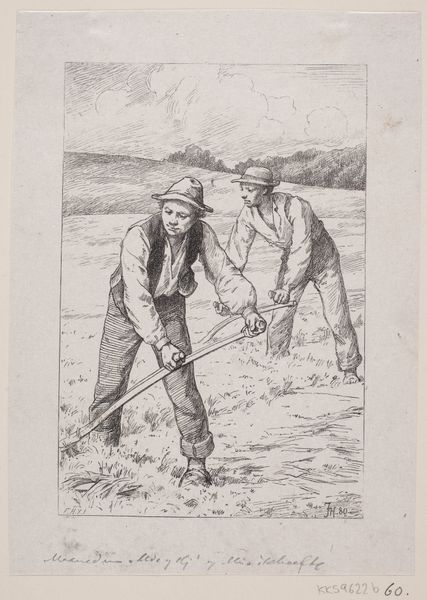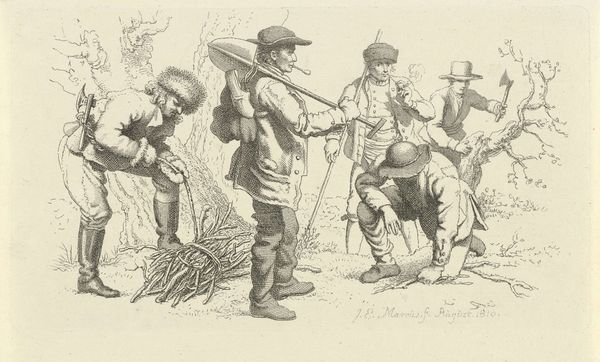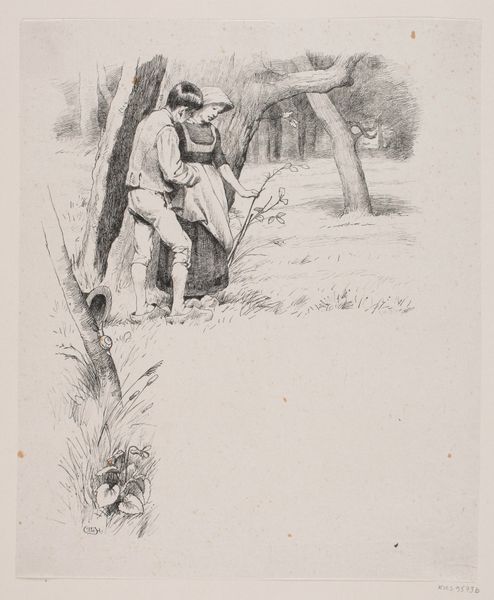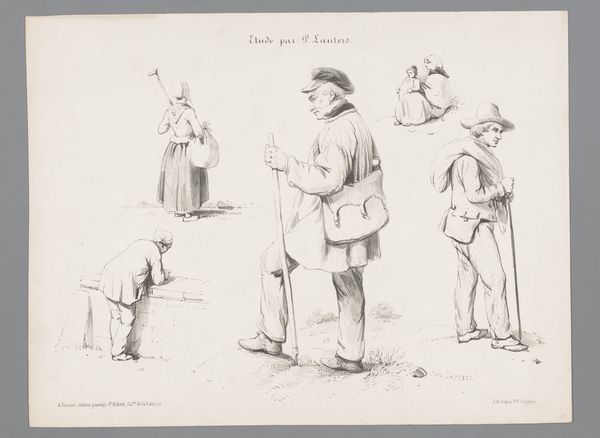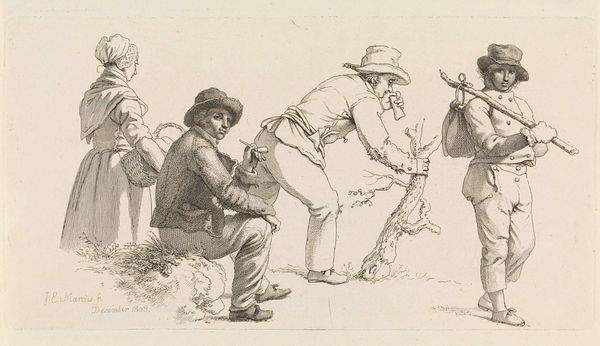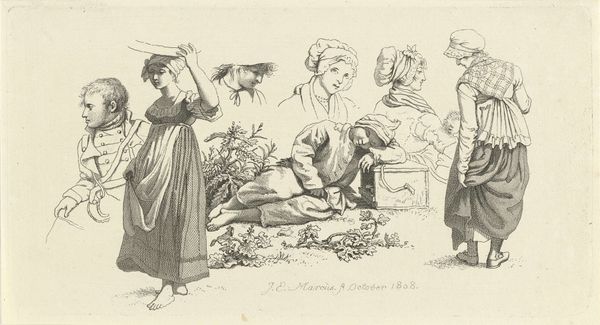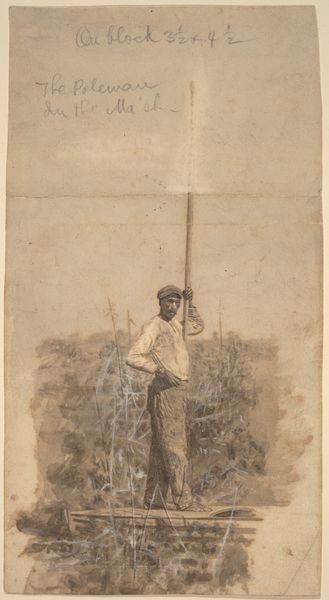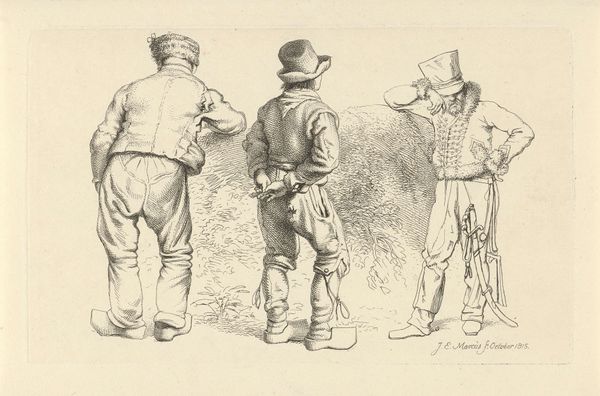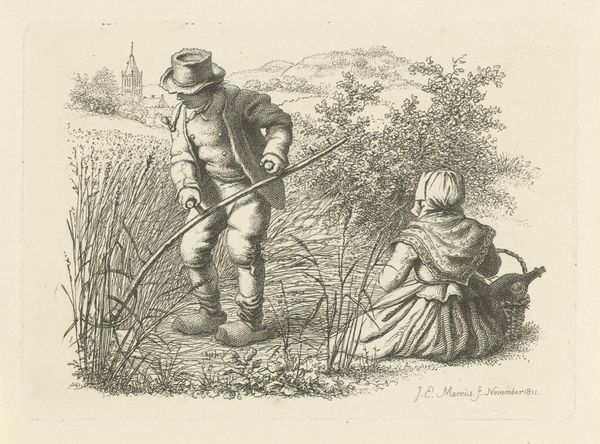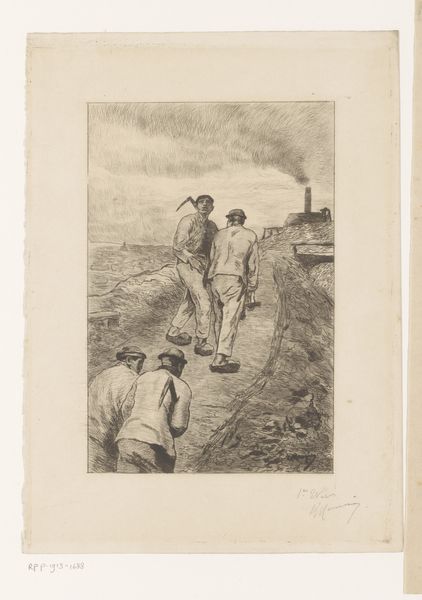
#
imaginative character sketch
#
automotive illustration
#
toned paper
#
light pencil work
#
quirky sketch
#
personal sketchbook
#
idea generation sketch
#
character sketch
#
watercolour illustration
#
fantasy sketch
Copyright: Rijks Museum: Open Domain
Editor: This watercolor sketch, "Boer en boerin, staand in het gras," from around 1840 by Johannes Tavenraat, has a really interesting, almost anthropological feel to it. I’m struck by how the figures seem somewhat isolated despite being grouped on the page. What catches your eye when you look at this? Curator: Well, I immediately consider the social context. The artist is depicting farmers, people tied to the land. How was rural life being perceived at this time? Was there a romanticization, or were social realities more harsh? The woman, seen from the back, seems almost removed, while the men are positioned in a way that might indicate their roles or status. Who were the intended viewers of such sketches? Editor: That’s a great point. I hadn’t thought about the intended audience. Was Tavenraat trying to document a disappearing way of life, perhaps, or presenting a particular vision of rural society to a more urban audience? Curator: Precisely! Consider how industrialization was reshaping Europe. Images like these could serve various purposes – from fueling a sense of national identity rooted in the countryside, to reinforcing existing social hierarchies. Is the “boer,” the farmer, presented with dignity or condescension? That choice itself is a political statement. What does the absence of their faces contribute to the message, in your opinion? Editor: That's fascinating, I guess the absence of detail invites us to project our own ideas, and prejudices, perhaps, onto them. It makes you wonder about the politics inherent in the depiction of everyday life, and how seemingly simple images can reflect broader power dynamics. Curator: Exactly. These sketches, and their reception, played a part in shaping how Dutch society understood itself during a period of massive social and economic transition. What do you make of how they have found a home in a collection like the Rijksmuseum today? Editor: It makes me realise that art is as much about what was going on at the time it was created as the thing itself!
Comments
No comments
Be the first to comment and join the conversation on the ultimate creative platform.
